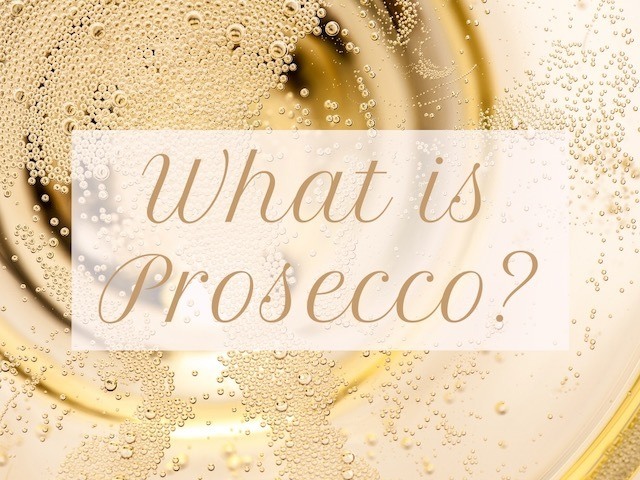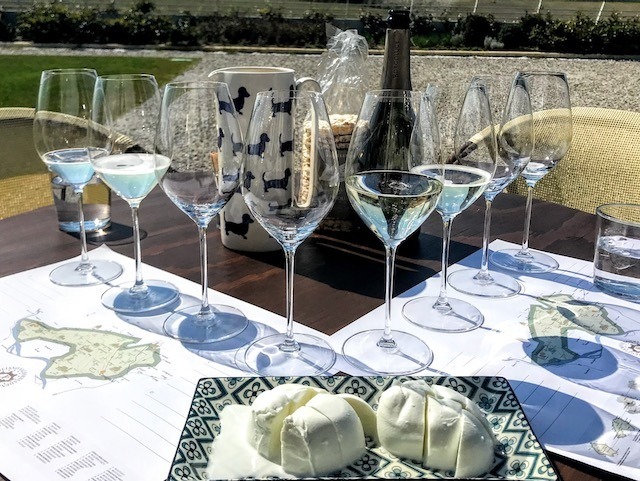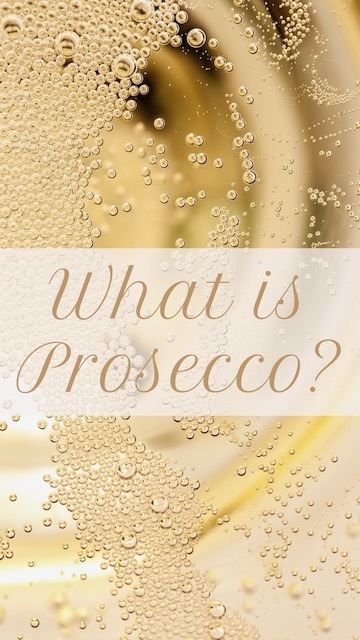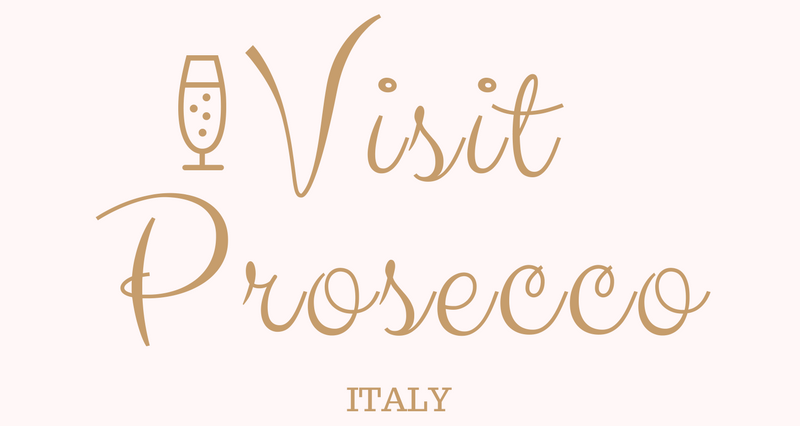Last Updated on November 3, 2023 by Jo Fitzsimons

Prosecco is one of the world’s most popular sparkling wines, but what is Prosecco, and how does it compare to Champagne? Is it sweet or dry? What’s the best way to serve it and store it? Can you put it in a cocktail? As someone who runs wine tours in Italy’s Prosecco region, I’m here to answer all your questions.
What is Prosecco?
Prosecco is a sparkling white wine from Italy made using at least 85% Glera grapes. And, in case you’re not sure, wine is an alcoholic drink made from fermented grape juice. Technically, Prosecco can be ‘flat’ with little to no bubbles, known as tranquilo, and frizzante with some bubbles (a light sparkle). However, the most well-known Prosecco is a fully-sparkling wine.
Is Prosecco the same as Champagne?
In the glass and even in taste, Prosecco and Champagne may seem the same. And to most people, the main difference is the much lower price of Prosecco. In wine terms, Champagne and Prosecco are different drinks. The three main differences are:
- Production method: Champagne and Prosecco use different methods for creating the bubbles in their sparkling wines. Champagne adds yeast into the bottles, known as the Traditional Method or Method Champenoise. Prosecco adds it into pressurised tanks and bottles it afterwards, known as the Tank Method or Charmat Method.
- Grapes: Champagne uses a blend of Chardonnay, Pinot Noir and Pinot Meunier grapes. Prosecco is made from Glera grapes which can be blended with up to 15% of Chardonnay and Pinot Grigio grapes.
- Where it’s made: Champagne is from France, and Prosecco is from Italy. Due to legal rules called ‘designation of protection origin’, Champagne is legally protected and can only be labelled Champagne if it’s produced in the Champagne region of France. Prosecco has some protection but it is not as strong as Champagne.
I’ve written a full guide to Prosecco vs Champagne.
Is Prosecco as good as Champagne?
For most people, Prosecco and Champagne are interchangeable. They are both delicious sparkling wines. Technically, the Traditional Method of producing Champagne leads to finer bubbles. Due to the grapes, both drinks have different flavour profiles. Champagne tends to have almond, white peach and citrus notes. Prosecco often has a fruity and floral profile. Ultimately, it’s down to personal taste and individual bottles. I would rather sip a good-quality Prosecco than a bad-quality Champagne just for the sake of status. A fun way to find out which you prefer is to arrange an at-home wine-tasting party.
Why is Champagne more expensive than Prosecco?
One of the key differences between Prosecco and Champagne is the production method. Champagne bubbles are formed in the bottle while Prosecco bubbles are created in pressurised steel tanks. Simply, Champagne production takes more time and more work. Together with Champagne’s long history, reputation and protected designation, Champagne costs more.
Is Prosecco sweet or dry?
If you’ve ever opened a bottle of Prosecco and found it too sweet or dry for your taste, chances are you picked up a bottle with a sweetness level that’s different to what you’re used to. Since most supermarkets and grocery stores tend to stock more popular, drier styles of Prosecco, it’s easy to forget that Prosecco comes in different sweetness levels. And Italian wine labels confuse things further because they use the word dry to refer to sweeter Prosecco. I know, right? Let me decode the system for you. In order of most dry to most sweet:
- Ultra Brut – The most dry Prosecco you can get with almost no residual sugar. Sometimes labelled as Zero Dosage or Brut Zero. Not so commonly available outside Italy.
- Extra Brut – A very dry Prosecco.
- Brut – Your classic dry sparkling wine, most similar in dryness to Brut Champagne. Also, the most common style of Prosecco available.
- Extra Dry – Sweeter than Brut. A good crowd-pleaser as most people don’t find it too sweet. While I prefer Extra Brut, I have been pleasantly surprised with many Extra Dry Proseccos.
- Dry – The sweetest Prosecco you can buy. If you like sweet sparkling wine, this is the one for you.

How to choose a good bottle of Prosecco
I strongly believe that the best Prosecco is the one you enjoy and that is within your budget. However, there is a system for classifying the quality of Prosecco. It’s based on how the grapes are grown, where they’re grown, and the production process, among other things. Italian wines fall into three classifications from highest to lowest: DOCG, DOC and ITG. If you want to buy the best quality of Prosecco, look for DOCG on the label. There’s likely to be at least one brand of DOCG available in your local store.
If you’re looking for the Rolls Royce of Prosecco, try to find a bottle of Cartizze. Cartizze is a small area within the DOCG wine production region that is thought to produce the best of the best, Grand Cru of Prosecco due to the superior grape growing conditions. Be aware, that although it’s a premium Prosecco, the flavour is distinct (a little sweeter) and not to everybody’s taste. I’ve got more Prosecco buying tips in my guide How To Choose The Best Prosecco.
What are the best Prosecco brands?
The best Prosecco brands are definitely open to hot debate. The list below is based on years of visiting the Prosecco region in Italy, tasting at many wineries and watching the Prosecco production process in action. These are premium Prosecco brands from small wineries that I’ve visited in Italy and are most likely to be found in specialist wine shops or online compared to in big supermarkets or stores. But they are worth hunting down.
- Adami
- Bastia
- Col del Lupo
- Col Vetoraz
- Gregoletto
- Marchiori
- Sorelle Bronca
Here’s my longer list of the best Prosecco wineries. If you prefer to shop from your local store, look for DOCG on the label and make sure to get your preferred sweetness. In a pinch, here are my go-to options if I’m shopping from UK stores (in order of preference):
- Harvey Nichols HN Prosecco, produced by Sorrelle Bronca
- Finest Prosecco Valdobbiadene DOCG, Brut (Tesco)
- Taste the Difference Conegliano Prosecco, Brut (Sainsbury’s)
- Specially Selected Valdobbiadene Prosecco (Aldi)

How to serve Prosecco
Temperature: Prosecco should be served chilled but not ice cold. The ideal temperature is around 6-7°C (around 41-44°F). You can generally hit the right temperature if you put the bottle in the fridge for at least a few hours before you plan to drink it. If it’s not cold enough, you’re better waiting. Adding an ice cube will kill the bubbles and the flavour.
Serving glasses: Most people don’t realise that Prosecco (and Champagne for that matter) is best enjoyed out of a large wine glass rather than a classic flute. This allows the aromas of the sparkling wine to breathe, enhancing the taste.
How to store Prosecco
Prosecco should be stored in a cool, dark and dry place out of direct sunlight. You should keep it in a spot that has a stable temperature of around 10-12°C (50-54°C). So, if you’re keeping it in a kitchen cupboard, choose one that’s not next to your oven. If you’re storing Prosecco for more than a week, keep it on its side so that the cork doesn’t dry out; a dry cork can shrink, letting oxygen in and bubbles out. Although it is a popular practice, don’t store your Prosecco in the fridge for more than a few days. The cold and lack of humidity can change the flavour.
How long does Prosecco last?
Long-term storage: Prosecco is a young wine that generally doesn’t age well and is definitely not one to keep as a vintage wine. Prosecco is at its best within the first 12 months of purchase. Between 12 and 24 months, there is a risk it will spoil.
Once it’s opened: Opened, Prosecco typically lasts a couple of days depending on how you store it. You will get the most out of your opened bottle if you keep it in the fridge and use a proper sparkling wine stopper. They’re not very expensive (under $25 on Amazon) and easy you use. This is the kind of wine stopper I use. Other methods like using foil or a spoon simply don’t work. Sorry.
Which food to serve with Prosecco
Most people serve Prosecco as an aperitivo, a before-dinner drink which is a great choice because Prosecco pairs incredibly well with salty foods like cured meats and Italian cheese. However, if you choose the right style of Prosecco, it can pair well with so many different types of foods including pizza, fish and chips and even Thai food. In fact, you can even find Prosecco to pair with Italian desserts. Why not have a Prosecco-themed dinner party, pairing a new Prosecco with every course? I’ve written a complete Prosecco Food & Wine Pairing Guide with a printable cheat sheet to help you with some ideas.
Prosecco Cocktail Ideas
There is a Prosecco cocktail for every occasion. What about an Elderflower Gin Fizz at your summer garden party or a Christmas Prosecco Punch for a festive family get-together? I love a bitters-based Aperol Spritz at the weekend. And, of course, Prosecco is a great addition to any celebratory Italian-themed breakfast or brunch – whip up a batch of Mimosas or the classic Bellini, just add some Italian pastries. Here’s my full list of Easy Prosecco Cocktails to Make At Home.
Try to swerve the hangover. But if you do end up in that unfortunate place, here are some hangover cures and the best hangover foods.

Where is Prosecco made?
Prosecco is made in Italy, with the main production happening in the Veneto and Friuli Venezia Giulia Regions of the country. Located around 1 hour from Venice, it’s the perfect day trip from Venice. While there is no strict protection for the name Prosecco (and it can therefore be produced in many places), the premium Prosecco Superiore DOCG is made in a small part of the Veneto region between two beautiful hilltop towns of Conegliano and Valdobbiadene. This area is a UNESCO World Heritage Site thanks to the rolling green hills and stunning topography.
How to go Prosecco tasting in Italy
The Prosecco region is a fantastic destination for a trip. You can take a wine tour (from €250 per group), dine on seasonal food in the local restaurants, visit the Prosecco vending machine and top it all off with a luxury farm stay or B&B. Be aware, there is a town called Prosecco near Trieste. However, the main production of Prosecco is no longer located there. I have more details about Italy’s Prosecco region as well as plenty of Prosecco trip-planning guides and a map of the Prosecco region if you want to visit. It’s the day trip from Venice, and also the perfect romantic Prosecco gift.
So, that’s my guide to Prosecco. Got any more questions? Drop a comment below.
Share it on Pinterest.


Thank you for your very thorough explanation. Informative and fun, I now feel I have a good grasp of what Prosecco is and is not.
Thanks Linda. Now you can go forth and show off! 🙂
Very informative, fun and not to serious about Prosecco. I’m ready to get started enjoying a glass tonight!
Enjoy! And thanks for the kind words.
Hi there, I’ve drunk Prosecco for 3 years. The last 2 times I’ve drunk it I get burning pain in chest and feel really sick. Any ideas why? Thank you.
Yikes! Sue, I’m afraid I don’t know the answer because I’ve not heard of this before (unless it’s heart burn?). I’d definitely ask your GP! Hope you get to the bottom of the cause.
I have to try a bottle after reading this informative article. Nice job and I also want to take a trip to visit world heritage site you showed a pic of. Probably never gonna happen but we must continue to dream.
Never say never, Jennifer! Get yourselves a travel fund savings jar and start there. You’re allowed to dip into it for your first bottle of Prosecco 🙂
I really love the presentation of information and the visual format. I work in a restaurant and am refreshing mental notes on sparkling wines for Valentine’s Day weekend. I found your page because I am specifically trying to find the answer to this – Are all sparkling wines from Italy called Prosecco?
Also – that cake analogy is PERFECT and is a definite keeper!
Thanks Cheryl and glad you like the cake analogy! And no, not all Italian sparkling wines are Prosecco – only those that match the criteria i.e. are made from the glera grape.
I totally love this blog post. It is really informative for everyone. Thanks for sharing.
You’re welcome!
I can’t find a prosecco I like. I’m the same way with Italian pinot grigio, so I’m thinking it’s a dislike of the grape. I like all kinds of wine – red, rose, white – ranging from medium to extra-dry, and I adore most champagnes. But as for prosecco, I just can’t get past the taste, and I’ve tried maybe 12 varieties ranging from the cheapest up to the most expensive I could find. Guess it’s personal preference. I mean, I can tolerate it as a cocktail component but not by itself.
Hi Victoria, taste is a very personal thing so it may be you don’t like the grape. I’d suggest trying different ‘types’ of Prosecco, not just focusing on price. E.g. if you’ve only ever had Brut but at different price points, perhaps try an Extra Dry or Extra Brut. Otherwise, cocktails is always a good option!